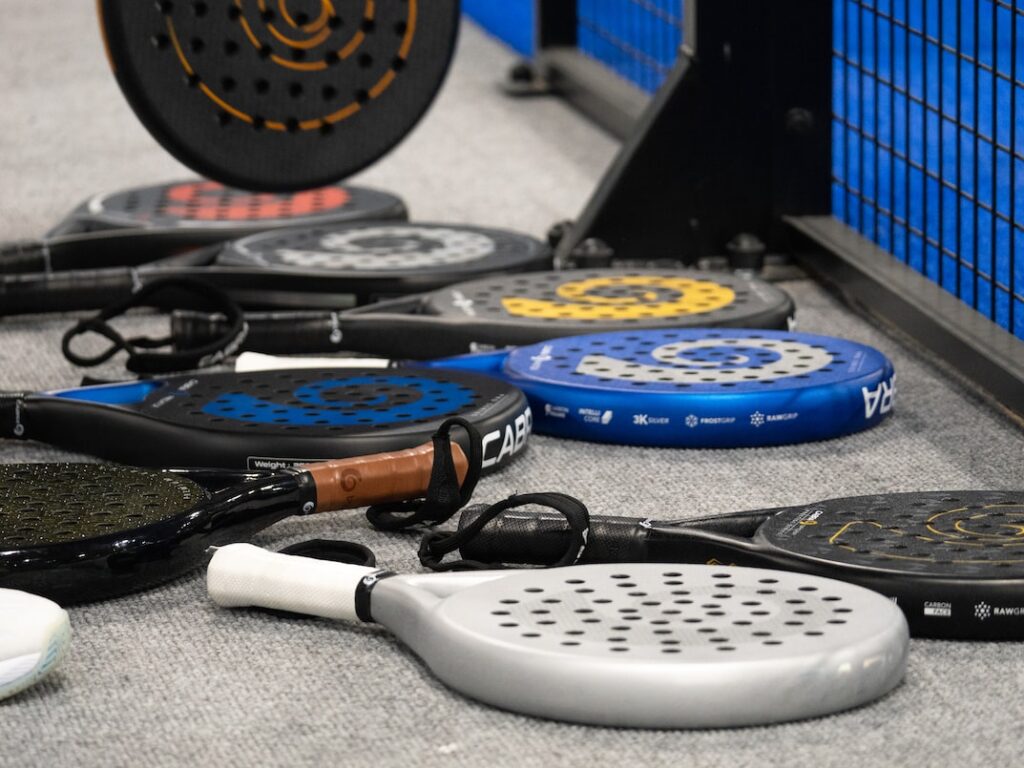Mastering Padel Terminology for Beginners: A Step-by-Step Guide
4 min read
Mastering Padel Terminology for Beginners: A Step-by-Step Guide
Are you ready to delve into the exciting world of padel? If so, you’ve come to the right place! Padel is a fast-paced and exhilarating racquet sport that combines elements of tennis and squash. But before you step onto the court, it’s crucial to understand the unique terminology used in this game. So, let’s dive in and master padel terminology together, step-by-step!
Step 1: Get to Know the Basics
Before we get into the nitty-gritty of padel terminology, it’s important to grasp the fundamental concepts of the game. Padel is played on a court with four walls and a net in the middle, similar to a mini tennis court. The goal is to hit the ball into the opponent’s side of the court without it bouncing twice before they have a chance to return it. Sounds simple, right? Well, let’s move on and unravel the exciting vocabulary of padel!
Step 2: Embrace Padel Specifics
Padel has its unique set of terms that set it apart from other racquet sports. To help you understand padel better, let’s take a look at some of the key concepts:
1. Padel Racket
The padel racket, also known as the “paddle,” is a solid, perforated paddle-like instrument that players use to hit the ball. It has no strings like a tennis racket, making it more forgiving for beginners.
2. Padel Court
The padel court is smaller than a tennis court but larger than a squash court. It features a glass wall on two sides and solid walls on the other two sides, providing unique opportunities for strategic play.
3. Lob
A lob is a shot where the ball is hit high in the air, typically over the opponent’s head. It’s an excellent defensive move that can buy you time to recover or put your opponent in a challenging position.
4. Smash
The smash is a powerful shot where the player hits the ball forcefully downwards, aiming to make it bounce high and hard to return. It’s a crowd-pleasing move that requires excellent timing and technique.
Step 3: Learn the Padel Strokes
Just like any sport, padel has a variety of strokes that players can use to gain an advantage. Let’s explore some of the essential padel strokes:
1. Vibora
The Vibora is a forehand shot with a lot of spin. It involves an upward motion using the wrist to create topspin, causing the ball to bounce higher and rapidly accelerate toward the opponent.
2. Bandeja
The Bandeja is a shot similar to a tennis smash. It’s an attacking stroke where the player hits the ball with an open-palm technique, aiming to hit it high and deep into the opponent’s court.
3. Viborita
The Viborita is a softer version of the Vibora, usually used in defensive situations. It involves a light tap with the wrist to send the ball back with less power but more control.
4. Chiquita
The Chiquita is a short, low shot hit with the backhand grip. It’s useful when the opponent is approaching the net and allows you to keep the ball low, making it challenging for them to return.
Step 4: Match Terminology to Keep In Mind
Now that you have a solid grasp of the basic padel terminology and strokes, let’s acknowledge a few essential terms used during a match:
1. Advantage
When the server wins the first point after a deuce (40-40), they gain the advantage. If they win the subsequent point, they win the game. However, if they lose the point, it returns to deuce.
2. Deuce
Deuce occurs when both teams have scored 40 points. The subsequent point after deuce will earn the server the advantage.
3. Let
A let is called when a served ball touches the net but lands in the correct service area. In padel, the server is allowed one let per service attempt.
Step 5: Keep Practicing and Exploring
Congratulations, you’ve taken the first steps towards mastering padel terminology! Like any new skill, practice is key. As you spend more time on the court and engage with fellow players, you’ll effortlessly absorb even more padel-specific vocabulary. Don’t be afraid to ask questions and seek guidance from experienced players, as they can provide invaluable insights into the nuances of the game!
I hope this step-by-step guide has helped you navigate the exciting world of padel terminology. Remember, learning padel is a journey, and understanding the language of the sport is an essential part of it. So grab your padel racket, gather some friends, and let the adventure begin!






